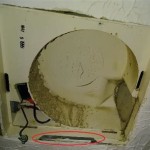How to Paint Bathroom Tile
Transforming the look of a bathroom can be as simple as painting the tile. This cost-effective solution provides a fresh new aesthetic without the need for costly and disruptive tile replacement. However, painting bathroom tile requires careful preparation and application techniques to ensure a durable and long-lasting finish. This article outlines the key steps involved in successfully painting bathroom tile.
Cleaning and Preparation
Before any painting can begin, thorough cleaning is essential to prepare the tile surface. This involves removing any existing dirt, grime, mildew, and soap scum. Use a strong cleaning agent specifically designed for bathroom surfaces, following the manufacturer's instructions. A mixture of baking soda and water can also be effective in removing stubborn stains. Allow the tiles to dry completely before proceeding.
Once the tiles are clean, it is crucial to ensure they are free from any loose grout. Using a grout scraper or a utility knife, carefully remove any loose or crumbling grout. After removing loose grout, clean the area thoroughly to remove any debris. Any remaining gaps in the grout can be filled with a grout sealant.
Choosing the Right Paint
Selecting the appropriate paint is critical to achieving a long-lasting and resilient finish on bathroom tile. Epoxy-based paints are generally recommended for bathroom applications due to their moisture resistance and durability. These paints form a hard, glossy finish that is resistant to moisture, mildew, and mold growth. However, epoxy paints require careful application and may have a strong odor during the drying process.
Alternatively, acrylic-based paints provide a more flexible and forgiving option. While they may not offer the same level of moisture resistance as epoxy paints, they are easier to apply and clean up. Acrylic paints are also available in a wide range of colors, making them a versatile choice for bathroom tile projects.
Application Techniques
Once the tiles are clean, dry, and prepared, it is time to apply the paint. The process is similar to painting any other surface, but with a few key considerations for bathroom tile.
First, use a high-quality paintbrush designed for smooth surfaces. Apply thin, even coats of paint, working in small sections. Be sure to allow sufficient drying time between coats as specified by the paint manufacturer. It is also important to avoid applying excessive pressure, as this can lead to paint pooling or uneven coverage.
To ensure a smooth and consistent finish, it is recommended to use a roller for larger areas. A roller allows for faster coverage and helps to create a more uniform paint application. However, it is important to use a roller specifically designed for smooth surfaces, as other rollers may leave texture or streaks on the tile.
Additional Tips
For best results, consider the following tips:
- Cover surrounding areas with drop cloths or painter's tape to avoid paint splatters or spills.
- Open windows and use fans to ensure proper ventilation during the painting process.
- Allow the paint to cure completely before using the bathroom. This may take several days depending on the type of paint and the environmental conditions.
- For added protection, apply a sealant specifically designed for painted tile. This will help to prevent water damage and ensure longevity of the paint finish.

How To Paint Tile Floor Angela Marie Made

How To Paint Over Tile Average But Inspired

Bathroom Tile Paint Tutorial And Honest Review Jeweled Interiors

How To Paint Your Bathroom Floor Tile Young House Love

Painting Bathroom Tile 6 Things To Know First Bob Vila

Can You Paint Tiles Up Cycle With B Q Vaslper Review

Small Bathroom Makeover With Painted Tile And Floors The Home Depot

Update Your Bathroom Tiles With Dulux Renovation Range Paint

Yes You Really Can Paint Tiles Rust Oleum Tile Transformations Kit Pink Little Notebook Bathrooms Remodel Bathroom Makeover Painting

Can I Paint Ceramic Tiles In Bathroom Ramsden Painting
Related Posts







